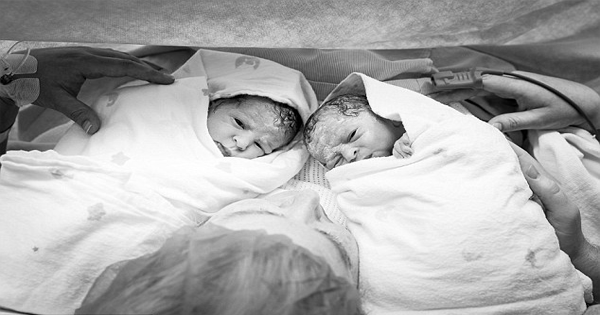In 2006, Kate Hill was diagnosed with polycystic ovarian syndrome (PCS), a medical condition where cysts grow on the ovaries. For Kate, this condition also kept her body from naturally conceiving. She had to undergo hormone therapy to allow her body to ovulate naturally before she could become pregnant.
But when Kate and her husband, Peter, finally discovered they were expecting, they never expected that their efforts would bring such incredible results.
The couple wasn’t just pregnant with twins. Ten days after these twins had conceived, Kate became pregnant again.
They were expecting three children.
When this happened, neither Kate nor Peter could explain it, and even their doctors confessed that they had to turn to Google to figure out what exactly was going on.
“I’ve never ever seen this happen before,” said obstetrician Brad Armstrong. “It was so rare that I could not find any literature in the medical review websites at all.”
This is what had happened: Kate initially became pregnant with twins, but Peter’s sperm cell survived in her uterus for ten days following. Kate’s body ovulated again, and another egg became fertilized by the same sperm that had conceived the couple’s twins. Doctors call this process superfetation.
Tragically, one of the Hill’s twins was lost in utero, but the two surviving children were projected to be born on December 20 and December 30, 2015, respectively.

Doctors ultimately delivered both girls – Olivia and Charlotte – on December 18 via C-section. The two girls were different weights and lengths and were even at different stages of development, despite only being ten days apart.
Now that the girls are almost one year old, Kate and Peter have been able to very clearly distinguish between the two ("Olivia is pretty loud, but Charlotte is the demanding one,” Kate joked.) and know their daughters are “definitely miracles.”





